goatflieg
Well Known Member
When initially fitting my canopy to the frame and fuselage, it looked like I would have problems fitting the canopy to the aft end of the canopy frame. Terry Lutz and Carl Franz were helping me with the fitting; I pointed out the large gaps between the aft canopy and the frame on both sides. They advised me to get the fit correct at the front and on the hoops, get the Big Cut done and see where I was at. I also called Van?s Builder Support prior to the Big Cut to discuss both the Big Cut and the large gaps. I don?t remember who I spoke with, but he was an experienced RV-8 builder. His suggestion was that after the Big Cut was done, I should start clamping the canopy to the frame at the front and work toward the back, clamping as I went, and see how it well it would pull together. Today I began the process, making sure the bottom edge of the canopy would fit around the vertical tubes of the canopy frame skirt. After setting three clamps on each side, it wasn?t looking good at all.
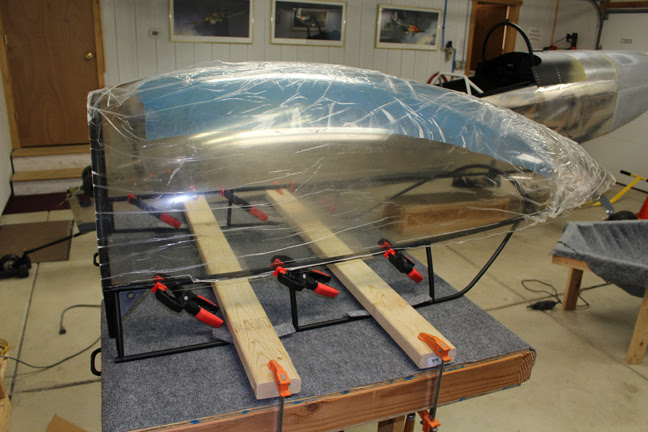
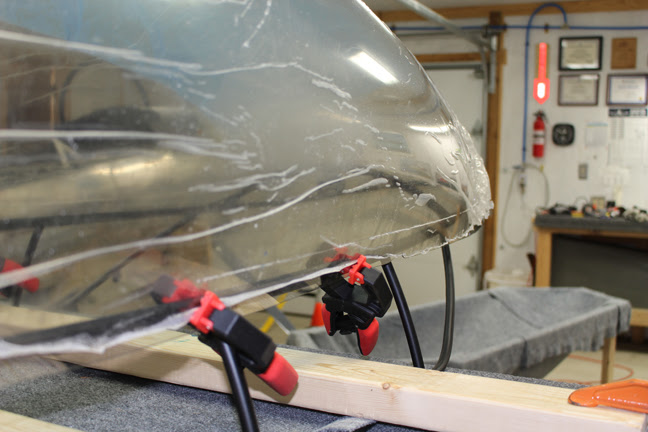
You can see in the second photo how much the canopy still tries to bow outward. I took the following photos from underneath, holding up the short rule to show how big the gaps are between the canopy edges and the frame.
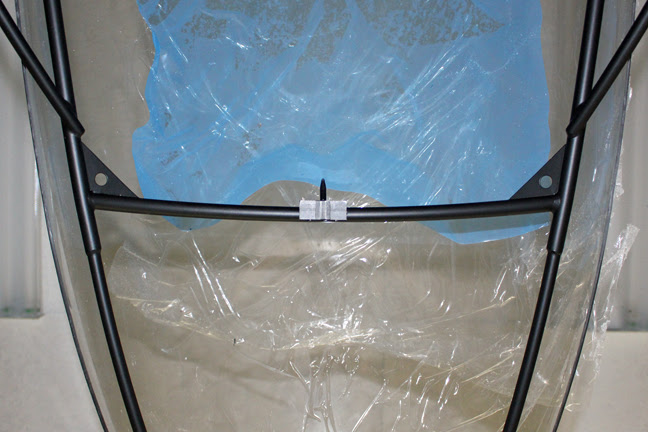
Don?t be fooled by this photo; it gives the illusion that the canopy is draping low over the frame and resting on the skirt tube. The earlier photos provide a better angle to assess how low the canopy is sitting, which is to say, not much. The canopy is fitting well around the front bow and resting on the tip of the aft bow.
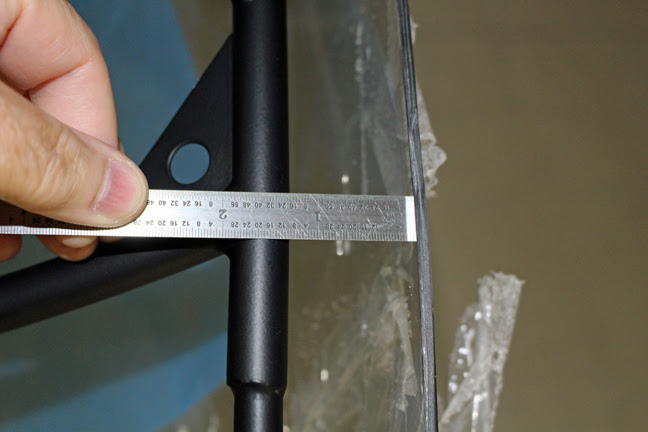
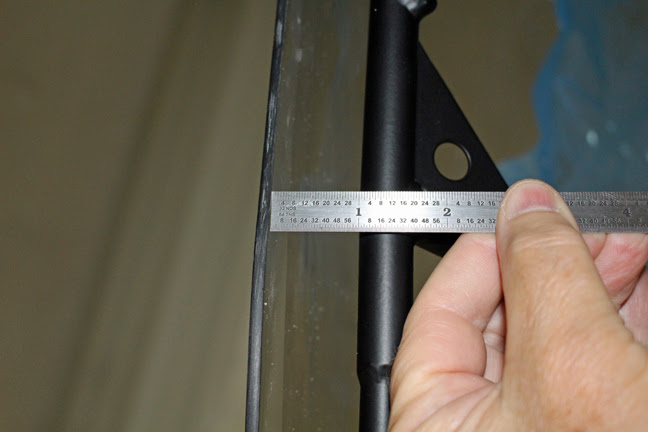
As you can see in the last two photos, the gaps between the canopy and the frame at the crossover support tube are huge; a total combined gap of about 2.25 inches. The canopy can be squeezed in to touch the frame, but that distorts the fit everywhere else and puts a lot of stress on the canopy; far more stress than I would ever want to build in to the assembly.
This can?t possibly be normal, can it? With the canopy already resting on the hoops, no amount of fore/aft movement or trimming can change the gaps in the relaxed fit of canopy to frame. I?m planning to get some of the local builders of RV and composite aircraft out to my shop to take a look at these parts and see what they think. In the meantime, I?d like to hear what the VAF community and Van?s Aircraft have to say about how this looks to them. It doesn?t look good to me at all.
You can see in the second photo how much the canopy still tries to bow outward. I took the following photos from underneath, holding up the short rule to show how big the gaps are between the canopy edges and the frame.
Don?t be fooled by this photo; it gives the illusion that the canopy is draping low over the frame and resting on the skirt tube. The earlier photos provide a better angle to assess how low the canopy is sitting, which is to say, not much. The canopy is fitting well around the front bow and resting on the tip of the aft bow.
As you can see in the last two photos, the gaps between the canopy and the frame at the crossover support tube are huge; a total combined gap of about 2.25 inches. The canopy can be squeezed in to touch the frame, but that distorts the fit everywhere else and puts a lot of stress on the canopy; far more stress than I would ever want to build in to the assembly.
This can?t possibly be normal, can it? With the canopy already resting on the hoops, no amount of fore/aft movement or trimming can change the gaps in the relaxed fit of canopy to frame. I?m planning to get some of the local builders of RV and composite aircraft out to my shop to take a look at these parts and see what they think. In the meantime, I?d like to hear what the VAF community and Van?s Aircraft have to say about how this looks to them. It doesn?t look good to me at all.




